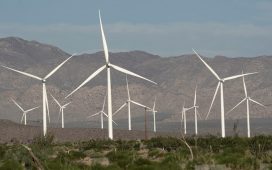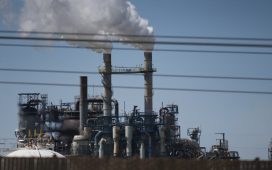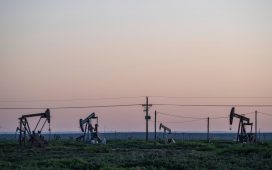Builders of oil and gas pipelines suffered a trio of setbacks over legal challenges in the space of just 36 hours between Sunday and Monday. An $8 billion natural gas pipeline was cancelled, the Dakota Access oil pipeline was ordered to shut down for up to 13 months, and the Supreme Court declined to greenlight the infamous Keystone XL oil pipeline.
Pipeline builders nodded grimly: growing environmental opposition and expanded federal environmental reviews mean it’s simply not as easy as it once was to build pipelines.
But oil and gas executives might not be the only ones with cause for concern in an era of rising environmental concerns. Long-distance power lines designed primarily to carry electricity from parts of the U.S. with abundant wind and solar power to regions that need more of it face growing legal and regulatory barriers, according to energy and legal experts.
“Power-lines, like other energy infrastructure, are becoming harder to build in the US,” said James Coleman, a law professor at Southern Methodist University who has written widely about energy infrastructure. There are now “more environmental reviews, more governments with veto power, and more restrictions on the use of eminent domain.”
Building additional long-distance power lines — hulking ski lift-like structures visible from miles away — is key to America’s transition from fossil fuels to wind and solar power, a number of experts believe. Since solar farms tend to be in sunny southwestern states like California or Texas, while most wind farms are in windy states such as Iowa or Illinois, it’s important to be able to send that electricity to regions lacking in wind or sun. If that’s not possible, then states in these regions will have little choice but to crank up gas- or coal-fired power plants.
Yet even as the need for such power lines grows, fewer are being built. Only about 1,300 miles of power transmission projects were built in 2018, well below a peak of about 4,600 miles built in 2013, according to federal data compiled this year by energy consulting firm ScottMadden.
A growing number of proposed projects — from the 780-mile Grain Belt Express that would connect wind energy-rich Kansas to Indiana, to the 520-mile SunZia line that would stretch from New Mexico to Arizona, and others — are mired in lengthy court battles and various stages of permitting.
What explains their problems? Experts reached for this article mostly argued that few individual court cases, and neither of the two major cases this week halting the Dakota Access Pipeline and the still-unbuilt Keystone XL, create direct precedents that could trip up power line developments. Largely that’s because recent legal decisions have distinguished between energy projects that pose a risk of polluting bodies of water, such as oil and gas pipelines, and those that don’t, such as power lines.
“Transmission lines for renewable energy do, and will continue to, face siting battles in court. No question. But this week’s major developments on oil and gas pipelines don’t tell us much about how those battles ought to play out,” said Michael Burger, executive director of Columbia University’s Sabin Center for Climate Change Law. The ruling temporarily halting the Dakota Access Pipeline is “unique” to the Trump administration’s environmental review of potential leaks, Burger said, while the Supreme Court’s ruling on a case that declined to allow Keystone XL to continue is limited to oil and gas projects.
But others suggested that the rulings doubled down on a doctrine of expanded federal environmental reviews in ways that could come back to haunt power lines and renewables. In the Dakota Access Pipeline case, for example, a D.C. district court judge said the pipeline must shut down until a sweeping environmental review he had ordered the government to undertake in March is completed.
“The key risks created by the Dakota Access decision are that it a) requires a full federal environmental review of a project that, like all oil pipelines and power-lines is regulated by the states,” wrote Coleman in an email. “And b) it requires removal of a project that was already in service. In the past, courts have been very wary of ordering removal of pipelines and power-lines that are in service, so this is a new risk.
Regardless of implications of this week’s rulings, the legal and regulatory barriers to power lines — widely decried inside the power transmission industry — are unmistakable, from lengthy environmental reviews to more dependence on permission from individual states.
“Power lines have actually provoked more political controversy than pipelines,” said Ryan Driskell Tate, an analyst at Global Energy Monitor, a non-governmental organization that catalogs fossil fuel infrastructure. “This kind of opposition that you’re seeing around pipelines can absolutely cause problems later down the road for power lines…. If you start having expanded environmental reviews, then that can carry over” into fewer of these projects getting approved.
According to a law review article by Coleman in 2018, many of the challenges are the result of states, the federal government, landowners and environmentalists all clamoring for a greater say over interstate energy projects. The upshot is a “complex mix” of concerns by several different actors, in place of what had traditionally been a process controlled largely by one actor: the states that the pipeline or power line crossed.
Many of these changes occurred during the Obama administration. In 2016, the Justice Department said it would push for expanded federal environmental reviews of energy transport projects, seeking to assuage the concerns of Indian tribes and environmentalists who had been protesting the Dakota Access Pipeline in North Dakota. Even after courts determined that a key federal permitting agency — the US Army Corps of Engineers — was indeed in compliance with a law that protected native lands, the Justice Department ordered an additional and lengthy environmental assessment of the pipeline, setting a precedent for more such reviews in the future.
At the same time, states were also asserting a greater role. New York state set its own precedent in 2016 when it denied a Water Quality Certification permit to the Constitution Pipeline, even though traditionally a federal permit — which the Constitution’s developers had already obtained — served as automatic grounds in such cases for any required state permits. Other states, including Connecticut the next year, would soon follow in New York’s footsteps, effectively expanding states’ power to veto interstate energy projects.
Meanwhile, landowners have been successfully been chipping away at the power of private companies to use eminent domain to obtain “easements,” or crossings, across landowners’ property — a tool that power line developers say they could not do without, since otherwise individual landowners would potentially have the ability to veto entire projects.
The upshot of these separate actors each accruing for themselves a greater say over interstate energy projects? Developers of both pipelines and power lines alike now must navigate a gauntlet of uncertain legal and regulatory hurdles before finally connecting their projects to the grid. One example: the average time to complete an environmental impact statement (EIS), which are required for major environmental projects, has steadily lengthened to more than five years.
Of course, not everyone agrees that significant new additions of long-distance power lines to ferry clean electricity around the US are even necessary in the first place.
In a widely noted report published last month, researchers at the University of California at Berkeley modeled what it would take for the US to reach 90% clean energy by 2035. They found that only $4-5 billion of long-distance transmission would be needed, compared with $102 billion in other electrical grid upgrades. Their model found that “significant additional bulk transmission” would be worthwhile in a scenario where the cost of storing electricity is high — which would be the case if technology fails to advance sufficiently — but that as long as storage costs are low enough, then not too much extra transmission would be needed.
“Long distance transmission has been a key enabler of the renewables revolution in California and Texas,” said Octavi Seminon, a technical director with renewable energy fund PowerHouse. “But future cost declines in batteries and renewables are poised to mitigate the need in the future.”
Still, that news is likely little consolation to the multi-billion dollar long-distance power line projects still waiting for states and the government to sign off on their proposals, or for court battles to wrap up. They could be waiting a long time.








